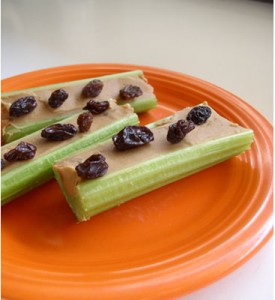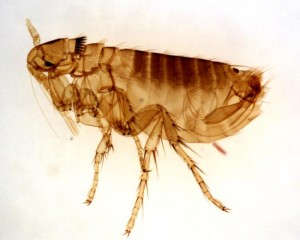May 18, 2012 | Pest Control
On Cinco de Mayo, we ran the billboard below:

"No More Cockroaches"
We thought the board was perfect for the occasion based on the song “La Cucaracha” that became popular during the Mexican Revolution, but also because cockroaches are a major concern in homes across the South. Cockroaches can be found in a variety of locations and are a significant health risk due to their ability to transmit several known diseases. Roaches are heavily reliant on humans for their food and shelter so they are most often found indoors.
Along with diseases, roaches cause allergens in a home. Children and people over 60 have a higher increase of respiratory issues and can go into anaphylactic shock if an asthma attack should occur due to being exposed to the allergens. A clean home can deter cockroaches and other pests from invading your home.
General House Cleaning Tips:
- Sweep, mop, and vacuum regularly
- Wipe up spills and other messes as soon as possible
- Wipe down counters
- Keep upholstery and other linens clean
Common roaches found in Atlanta area homes are the American Cockroach, Brown-banded Cockroach, German Cockroach, and Oriental Cockroach. For more information on roaches, visit our Identify your Pest section of our website. Roaches infest in high numbers so it is best to call an exterminator to ensure that the infestation is taken care of quickly and effectively.
May 16, 2012 | Community/Events, Mosquito, Pest Control
Every good party has a theme! And what better time to have a party than the summer? Summer is a great time for cookouts, family get-togethers, birthdays, or just because! And what goes together better than summer and bugs? So why not have a bug-themed party?
Bug theme decorations:
- Use green streamers that look like vines and shrubs
- Place jars with plastic bugs as table decorations
- Antennae headbands
- Magnifying glasses
It’s never a good idea to pair real bugs with food. But we can make our food look like insects, right! Try these bug themed treats that are sure to be pleasing on the eyes and the stomach.

Ants on a Log
Bug theme foods:
- Dirt Cake
- Gummy worms
- Fruit caterpillar kabobs – skewer green grapes, place 2 white dots on front of first grape using cream cheese, place mini chocolate chip in center of white dots for eyes
- Bug juice – mix any flavor of red juice and a blue juice…to make GREEN juice
- Ants on a log – You will need: Celery, cream cheese or peanut butter, raisins
- Slice celery horizontally and spread with either cream cheese or peanut butter.
- Place raisins on top
- Burrowing Worms – Cut 6-7 slits along one half of each hotdog (1/4″ apart and 1/2″ deep). Do the same on the opposite side. Cook hotdogs and serve on bun with hotdog condiments.
- Create your own critter mix – It’s trail mix with a spin. Give guests a bag and let them make their own mix with selections of nuts, seeds, cereals, crackers, pretzels, raisins, dried fruit, marshmallows, chocolate chips, etc.
- Watermelon Bug: Cut a rectangle out of the top of a watermelon. Scoop out the flesh and refill with fruit salad. Create a face on the melon using fruit (an orange wedge for the mouth, grape eyes). Use banana halves to make six legs and curl some pipe cleaners for antennae. Attach everything with toothpicks
- Pretzel butterflies: Attach two small pretzels, tip to tip. Place piece of caramel at tips and microwave for 10 second or until caramel is melted and pretzels are stuck together.
- Mosquito Bloody Marys – for the adults, of course.
Don’t let uninvited guests ruin your party. Call Northwest Exterminating to get rid of any mosquitoes or pests.
May 14, 2012 | Community News, Wildlife
The following story is the reason I decided to start bringing a camera with me on the job. I didn’t want to miss any unique experiences like this one.
I showed up at the customer’s house on a rainy afternoon. They had told our office staff that they had seen
bees on the side of their home and had heard some buzzing in the wall. At first glance it seemed pretty typical, bees entering the structure of the home and building a hive. The customer asked me to look at something outside, she then pointed out a large mass in a tree in her neighbor’s yard. I grabbed my binoculars to get a better look and I couldn’t believe what I saw. Attached to the tree was a mass twice the size of a football and filled bees. (After researching this phenomenon I discovered this is how they transfer the queen to a new hive. All the workers gather around the queen to protect her while a select few special workers prepare the hive.)
The bees were entering the customers house through a small gap between the brick basement and the hardy plank siding. By using a stethoscope, I was able to locate the exact location of the hive, the ceiling above their living room which was also the floor of the master bedroom. I drilled into the ceiling and found honey on my drill which confirmed the hive location.
We began carefully cutting into the sheet rock to reveal the hive. What we saw was truly nature at work.
Thousands of bees working together for one common purpose, to make honey! The noise was deafening, the buzz of the bees filled the room, yet surprisingly they didn’t attack.
When bees are inside a home we remove them with a shop-vac. We began to remove individual pieces of honeycomb and place them in garbage bags, we filled up 2 contractor sized bags each weighing about 30-40 lbs! Once the honeycomb was removed, every ounce of wax and honey must be completely cleaned off, so we scraped and scrubbed to ensure the bees and other pests wouldn’t come back.
We sealed up the entry on the outside of the home and placed plastic around the opening to keep any left over bees from entering the living space of the home. Success! Hive removed, customer and family safe!
Matt Bowley
May 11, 2012 | Pest Control
How can something as small as a flea be such a huge pain? Pet owners are all too familiar with the annoyance of fleas because they make us AND our pets miserable. Fleas attach themselves to warm-blooded animals (pets and humans) and feed on their blood. A flea bite can cause discomfort, painful, itchy red bumps and can lead to an allergic reaction. In some cases, they can even transmit diseases like the bubonic plague, murine typhus and transfer tapeworms in pets.

To prevent fleas from becoming a pest in your home, clean and vacuum frequently. A clean home is a healthy home and will aid in the prevention of other pests as well. Cleaning will help to remove any fleas and their eggs. Maintaining a clean yard is just as important, especially if you have pets that go outside often. A well kept lawn with no debris or pet droppings will reduce the flea population around your home. Bathe pets regularly and apply a flea and tick treatment. Most importantly, call a professional exterminator if you have fleas in your home. A flea infestation can be very difficult to get rid of and is best left to the professionals so the problem does not continue to grow.
Interesting Flea Facts:
- The largest recorded flea measured almost ½ inch!
- Fleas consume 15 times their weight in blood each day. That is like a 140 lb. woman eating 8,400 burgers in one day!
- Fleas are the number one cause of allergies in cats and dogs.
- Fleas can live for about 100 days.
- Fleas don’t fly, they jump.
- A pair of fleas can produce 400-500 offspring in their lifetime.
- A flea can jump up to 8 inches high or 150 times its own height.
Got a flea problem? Call Northwest Exterminating for professional, effective flea control.
May 11, 2012 | Pest Control
How can something as small as a flea be such a huge pain? Pet owners are all too familiar with the annoyance of fleas because they make us AND our pets miserable. Fleas attach themselves to warm-blooded animals (pets and humans) and feed on their blood. A flea bite can cause discomfort, painful, itchy red bumps and can lead to an allergic reaction. In some cases, they can even transmit diseases like the bubonic plague, murine typhus and transfer tapeworms in pets.

To prevent fleas from becoming a pest in your home, clean and vacuum frequently. A clean home is a healthy home and will aid in the prevention of other pests as well. Cleaning will help to remove any fleas and their eggs. Maintaining a clean yard is just as important, especially if you have pets that go outside often. A well kept lawn with no debris or pet droppings will reduce the flea population around your home. Bathe pets regularly and apply a flea and tick treatment. Most importantly, call a professional exterminator if you have fleas in your home. A flea infestation can be very difficult to get rid of and is best left to the professionals so the problem does not continue to grow.
Interesting Flea Facts:
- The largest recorded flea measured almost ½ inch!
- Fleas consume 15 times their weight in blood each day. That is like a 140 lb. woman eating 8,400 burgers in one day!
- Fleas are the number one cause of allergies in cats and dogs.
- Fleas can live for about 100 days.
- Fleas don’t fly, they jump.
- A pair of fleas can produce 400-500 offspring in their lifetime.
- A flea can jump up to 8 inches high or 150 times its own height.
Got a flea problem? Call Northwest Exterminating for professional, effective flea control.